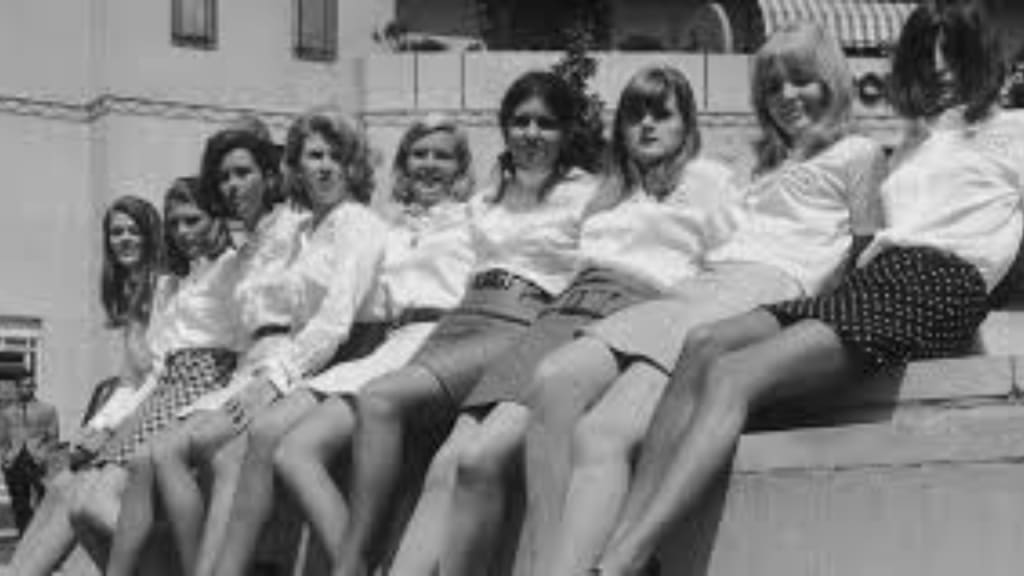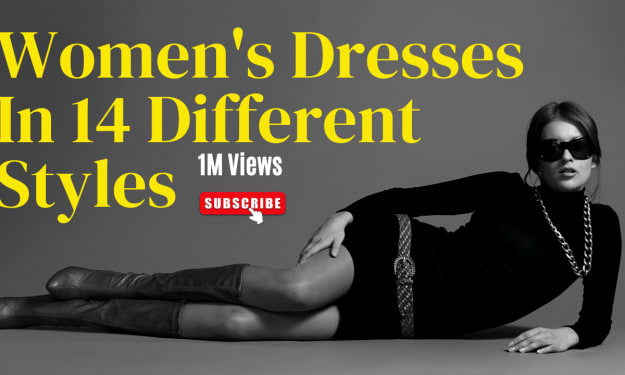In 90s Miniskirt, Why So Popular
Archaeologists have found evidence of miniskirts as far back as 5400-4700 BC.

After this insanely long, dreary East Coast winter, things are finally taking a turn for the better! The temperature is rising, so it's time to start busting out the spring and summer wardrobe. The street stylers of NYC are already clad in a favorite warm-weather piece: the miniskirt.
As some of you may know, the miniskirt is much more than a piece of fabric covering part of your thighs. It is the garment that defined an entire decade of fashion and is closely linked with feminism and empowerment.
So how did this simple cut with such a complex history come to be?
While the miniskirt is associated with the 1960s, its story begins long before then- a few thousand years earlier. Archaeologists have found evidence of miniskirts as far back as 5400-4700 BC. European figurines dating back to that period were dressed in early versions of the garment, eerily similar to the design we know today. They even had them in ancient Egypt; fresco paintings depict female acrobats of the time wearing them.
Now let's jump ahead a few thousand years. To understand the relevance of the modern miniskirt, we need to know the circumstances that preceded it.
Europe and the U.S were rife with sexist ideologies in the 1800s- women were thought to be weak and vulnerable, making politics, business, and physical activity out of the question. It reflected these beliefs in the fashions of the time, which included tights, corsets, and long, restrictive skirts.

By the 1920s, women's fashions had loosened up, quite literally. Shift dresses in the "flapper" style became highly popular, and hemlines rose to just below the knee. Performer Josephine Baker caused a sensation with her costumes, which typically featured scandalously short skirts. In the 1950s, skirts were full and had not yet risen above the knee, but shorter styles continued to feature in costumes, particularly in science fiction films of that time.
The 1960s are when the miniskirt truly began to take off. Before this decade, young people were expected to dress in the same style as their parents. Sears catalogs would even feature mother and daughter models in identical dresses. However, the '60s brought significant political and social change, and fashions changed to reflect this new era.
This younger generation was highly self-aware and rebellious. They no longer needed to conform to specific rules and manners, including dress laws. This newfound attitude demanded a look to match that embodied a carefree, youthful spirit- and the mini skirt was the perfect candidate.
The person universally credited as the inventor of the miniskirt we know today is British designer Mary Quant.
Quant had opened a Boutique called Bazaar, a popular hangout for mods and rockers. Though she lacked formal design training, she found herself with her finger on the pulse of a street style revolution. She began to make and sell clothes that reflected the attitudes and desires of her customers rather than the Parisian runways. In 1965, she hacked the hemlines of her skirts to several inches above the knee and christened the style after her favorite car, the Mini. The aesthetic of Quant's miniskirt carried many of the ideas young women of the time sought to embody: youth, energy, originality, and rebelliousness.
Another designer, Andre Courreges, has also claimed credit for pioneering the miniskirt. He began shortening his hemlines in the early 1960s, and crafted futuristic, minimalist styles. Compared to Quant, Courreges' designs were imbued with greater sophistication, making them more palatable to the world of French haute couture. When asked who was the true inventor of the unique silhouette, Quant dismissively remarked, "It wasn't me or Courreges who invented the miniskirt anyway- it was the girls in the street who did it."
While the Mini was wildly popular with the younger generation, not everyone shared such enthusiasm. The Netherlands banned the skirt for a time, and many women had to protest in support of their beloved clothing. Designer Christian Dior expressed disdain for the style, whose full-skirted "New Look" was the opposite. Even Coco Chanel declared the garment "just awful," even going as far as to say that she had never met a man who liked women wearing them. As fashion progressed into the 1970s, maxi styles began to come into favor, and the Mini lost the momentum it once had.

The mini skirt has recently become a wardrobe staple, albeit it doesn't carry the same powerful connotations it had against the backdrop of the 60s. It began making a comeback in the '80s. Anna Wintour made the matching jacket and mini skirt one of her signatures looks, and "rah-rah" dresses inspired by cheerleading uniforms became popular. In a move that might have Coco turning in her grave, Karl Lagerfeld declared Chanel's dismissal of the mini skirt the biggest mistake she ever made. He proceeded to make short skirts an integral part of the Chanel suit.
The '90s and 2000s saw a significant resurgence of the Mini. It was incorporated everywhere, from the red carpet to work wear. Today, the Mini is seen no longer as the scandalous symbol of rebellion it once was. Society and social norms have evolved to catch up with the garment's ideas, and it is now viewed as an essential wardrobe staple of the modern woman.






Comments
There are no comments for this story
Be the first to respond and start the conversation.